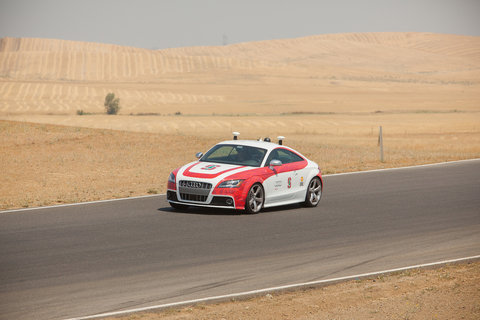Vehicle Dynamics and Control At The Limits of Handling

Self-driving cars have the potential to dramatically reduce crashes by handling critical scenarios that human drivers find challenging or lack the ability to navigate. To realize this potential, however, cars must be explicitly designed to make full use of the available friction between the tire and the road when designing and executing maneuvers. A great inspiration comes from human race car drivers, who routinely use all of the friction between the tire and the road to post the best lap time. We want to harness the same capability for vehicle safety, ultimately enabling the car to take any action allowable under the laws of physics to move the vehicle out of harm’s way. In regular testing trips to Thunderhill Raceway Park, we and work with and learn from some of the best race car drivers in the world, harnessing that knowledge to design algorithms that handle emergency scenarios on the road.
Recent Publication Highlights:
Insights into vehicle trajectories at the handling limits: analysing open data from race car drivers
An autonomous lanekeeping system for vehicle path tracking and stability at the limits of handling
Autonomous Vehicle Control at the Limits of Handling
Simultaneous Stabilization and Tracking of Basic Automobile Drifting Trajectories
Recent News Highlights:
Stanford’s Self-Driving DeLorean Drifts, Does Killer Donuts
For Safer Self-Driving Cars, the Race Track May Hold the Key
This Driverless Car Can Beat a Race Car Driver (Sometimes)
Researchers/PhD Candidates in This Area:
Jonathan Goh
Vincent Laurense
John Subosits
Tushar Goel
Recent Publication Highlights:
Researchers/PhD Candidates in This Area:





